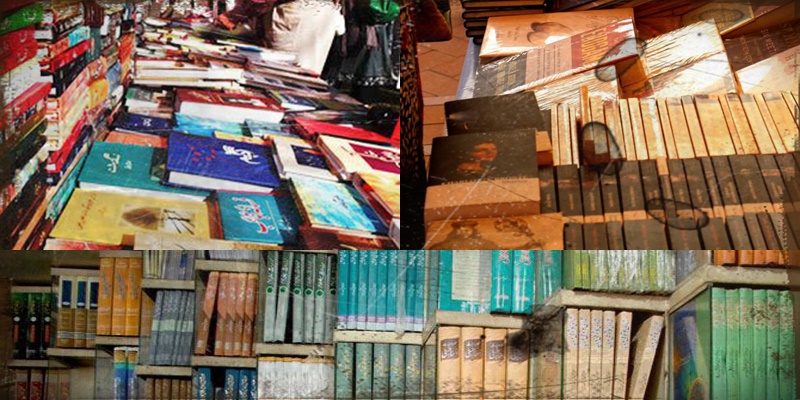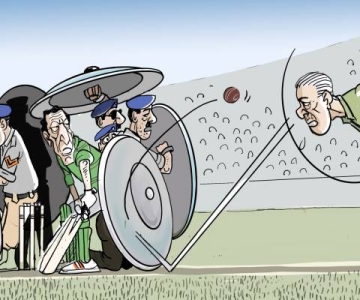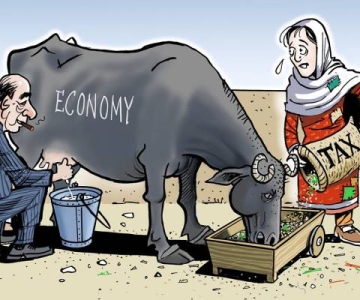I am posting the synopsis of my paper entitled Silhouetted Silences – contemporary Pakistani literature in the age of terror, that I presented at the SAARC writers’ festival held in Agra, India (March 13-17, 2009). The full paper needs to be edited and referenced so that will posted a little later.
Round my neck,
from time to time, there was the hallucination
of a noose, and now and then, the weight
of chains binding my feet.
Then one fine day
love came to drag me, bound and manacled,
into the same cavalcade as the others (Faiz)
Since the invasion of Afghanistan by the United States and the global hysteria about terror and terrorism, Pakistan has faced the greatest of existential challenges after its dismemberment in 1971. As a frontline ally of the US in the war on terror, Pakistani society and polity have been engulfed by growing militancy and acts of violence commonly branded as terrorism. Whilst there is no single definition of terrorism, the mainstream media and policymakers in the service of imperial rhetoric aimed to justify and perpetuate the occupations of Afghanistan and Iraq have established terrorism as the major threat to domestic and regional peace in South Asia. Acts of premeditated and organised violence in India, Pakistan and Bangladesh have thus assumed a central place in discourse on regional cooperation or its converse: the rivalries between the constructed nation states and their irresponsible power-elites.
In this milieu, the South Asian citizens have been the victims of violence, uncertainty and acrimonies that have only led to exacerbation of poverty, inequality, ascendancy of militarism and war-mantra. All of this is taking place when globalization is relentlessly seeping into domestic economies, cultures and social systems. Where does this leave the writers and poets of the region who grapple with the complex, confusing and fast changing social and political realities? Whilst the community of South Asian writers traditionally the forbearers of intellectual and political movements is beleaguered by corporate media industry, it has struggled to respond to challenges that events have created.
This paper will explore the response of the Pakistani literature in Urdu, English and some regional languages and how these streams are reacting and interacting with the new reality of terror, violence and suicide bombing. The kaleidoscope of Pakistani literature is varied and presents a mixed view. If on one hand, the writers creativity is strangulated by ideology and anti-Americanism, the sheer scale of violence and its direct impact on human lives and social structures is a central issue faced by the writers, poets and intellectuals of Pakistan.
Part I of the paper will explore the contradictions that the current political and social milieu creates for the writers and the poets of contemporary Pakistan. The next section will trace the developments from 2001-2008 and how dictatorship, martial rule, terrorism, militant extremism and imperial occupation of Afghanistan have placed the Pakistani writer, like his fellow citizens, in a tight corner.
Part III will review the revival of literary language of political resistance in Pakistan since 2007 due to anti-dictatorship movements. In this part the selected literary endeavours of Pakistani writers will be highlighted to showcase the major trends in English language writing. In this section, three novels The Reluctant Fundamentalist (Mohsin Hamid); No Space for Further Burials (Feryal Ali Gauhar); and The Case of Exploding Mangoes (Mohammad Hanif) will be discussed as examples of a newly emerging market for Pakistani literature in English. More importantly, these novels bring forth the critical issues of war, violence, terror, identity and the workings of Pakistani military that is central to global debates on South[west]Asian peace.
Selected writings will be discussed in Part IV that will present the various layers and dimensions of literary output; and also raise the issue why taboos still exist restricting the native, vernacular writers to freely condemn religious extremism and violence. In this section, short stories Surkh (Masud Sabir), Hiyakat e khoon chukan (Asim Butt), yeh daagh daagh ujaala (Syed Ali Mohsin); and a novella Qilla Jangi (Mustansir Hussain Tarar) will be discussed as the specimens of direct writing in the recent years. Three poems, Dahshat ke naam par (Iqbal Kausar); Saffaak (Saleem Pasha) and Bajaur ka taziyat nama (Kishwar Naheed) shall be textually and contextually analysed. Examples from regional writings shall also be cited to enrich the discussion and present the myriad nuances of today’s literature. Issues of proximity and cultural fissures within the society shall also be discussed.
Part V will identify the key literary trends and struggles that Pakistani writers face today. The section will also locate the relevance of literature and writing in the age of mass electronic media and corporate hegemony on ideas and expression. At the end, key conclusions will be drawn to highlight the role of literature in tackling and confronting militancy and building bridges between divergent communities within the SAARC countries and between the nation-states clamouring for identity, peace and progress.



